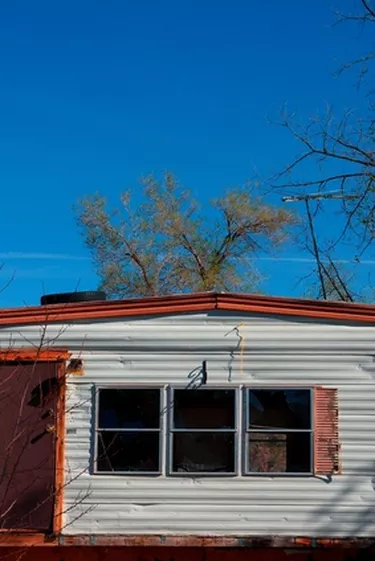
Every piece of real estate is unique and the true value is the highest price a person is willing to pay for it. This is known as the "market value." Real estate values depend on a number of factors. These include the size of the land, the age and condition of the home or double-wide, improvements such as a garage, and the neighborhood. Real estate appraisers go through extensive training before they can determine the value of buildings and land. Homeowners or potential buyers, however, can estimate value.
Step 1
Determine the land area in acres and note the age, square footage and condition of the double-wide. Some of this information is usually available from the local county or city property appraiser's office or website.
Video of the Day
Step 2
Visit the local property appraiser or his website for recent sales of other similarly aged and sized double-wide mobile homes in your neighborhood with close to the same size lot. You will use these as "comparable sales." After adjusting for improvements, an average of the sales prices will give you an idea of the value of your property.
Step 3
Write the address of your property and each comparable property in its own column at the top of a page of paper or in a spreadsheet. Write the sales price of each property under its address. List any special features of your double-wide and yard and the sold properties under each of their addresses in their columns. There may be a swimming pool, two-car garage, a one-car carport, sprinklers, a barn, a paved driveway or other improvement that has a value. Figure out a value for each feature. One way of determining this is to look on the tax collector's website and use those values.
Step 4
Deduct from the sales price of each comparable property the value of any improvements it has that your property does not have. If a property had an in-ground swimming pool valued at $10,000, deduct $10,000 from the sales price of that property.
Step 5
Add the value of improvements on your property to the comparable properties that do not have those improvements. If your property has a two-car garage valued at $20,000 and none of the comparable properties had one, add $20,000 to the sales price of each of the comparables.
Step 6
Calculate the deductions and additions to obtain an adjusted sales price for each of the comparable properties. Add the adjusted sales prices of all comparables together and divide by the number of comparables to get an average sales price. This figure should be close to the value of your property.
Step 7
Take into account the neighborhood where each property is located. You can't really put a dollar value on this, but be aware that a neglected home in a neighborhood of well-maintained properties will have a higher value than a well-maintained home in a neighborhood where there is no pride of ownership.
Step 8
Look at the property appraiser's value for your property. If you have come up with a value that is a little higher, you will probably be close to what an appraiser would come up with. The values given to real estate by property appraisers and tax collectors are usually below the actual market value -- the price someone would pay to buy the home -- but you can still use those numbers as a guideline. It is highly unlikely that the market value of a property would be lower unless the double-wide is in such bad condition that it is not habitable.
Tip
In today's market, it is not always easy to find recent comparable sales close to your neighborhood. It may be easier to visit a website that will provide an estimated value of your property.
Warning
Online home valuations are not always accurate, particularly for rural properties.
Things You'll Need
Pencil
Paper
Spreadsheet program
Video of the Day